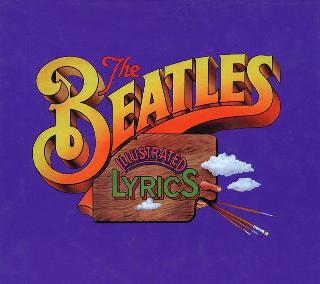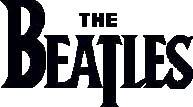Index
Home
Vorige
I'm a Loser
Composer(s) : Lennon and McCartney
Year : 1964
Chords/Tabs: I'm a Loser
Notes on "I'm A Loser" (IAL)
KEY G Major
METER 4/4
FORM Intro -> Verse -> Refrain -> Verse -> Refrain ->
Solo Break (half-Verse + Refrain) -> Verse ->
Refrain -> Outro (fadeout)
GENERAL POINTS OF INTEREST
Style and Form
- For a rock song, this one contains a stronger blend of folk elements
than almost anything else the Beatles had done to-date.
- Apart from the semi-acoustic arrangement, we have a form which (with
the exception of the break and outro) presents a ballad-like straight
alternation of verse and refrain. The lyrics are different for each
verse and imply a kind of narrative that is told in 2nd person direct
address, and ends on a cliche moral note ("... pride comes be-fore a
fall..."). We'll come across even more details supportive of this
thesis as we do our walkthrough below.
- The most unusual formal touch here is the instrumental break section
that is a hybrid half-verse plus refrain. However, the ad-lib intro
and recapitulation of the break that occurs in the outro are both also
noteworthy.
Melody and Harmony
- The melody is closer to the Mixolydian mode than it is bluesy, with the
Major 3rd (B) and flattened 7th (F) consistently emphasized in the verses.
The naturally ocurring Major 7th (F#) occurs only in the refrain section
along with the 6th degree of the scale (E) which is emphasized there after
having been witheld entirely during the verses. I'll grant you that
virtually no composer plans out such consistency in any kind of
pre-meditated fashion, but it still fascinates me to observe how the
creative mind does seem to subconciously impose such order.
- The harmony is also modal by virtue of the heavy use of the flat-VII
chord throughout. The continual juxtaposition of the flat-VII (F Major)
to the V chord (D Major) in this song makes for a tangy cross relation
between the F natural of the one chord with the F# of the other.
- The harmonic diet is otherwise straightforward and limited. There is
a small number of chords involved overall, and the whole thing is
strictly in G Major with not even the least hint of modulation or other
gambit; yet another aspect of the song which suggests the folk style.
Arrangement
- The details of the arrangement seem more carefully organized than usual
toward maximizing contrast between the verses and refrains. In the verses,
John sings a single tracked solo, the bassline is in a predominantly
four-in-the-bar oompah pattern, and the percussion is quietly restrained.
For the refrains, John is double tracked and joined by Paul's harmonizing
above him, the bassline is walking, and the percussion gets noisier and
more sizzling.
- The rhythm guitar provides a background wash containing a high level
of noise from the pick being strummed across strings. The lead guitar
provides its own wash of bent-note chords during the verses. This
effect sounds as if it were mixed more prominently and played with an
increased amount of bending during the final verse; a touch which
pleasantly resonates with the analogous bent notes in the lead vocal
and the harmonica solo.
- John's harmonica makes its first appearance here since
"I Should Have Known Better"
, and this time it is used more sparingly though with
greater abandon.
SECTION-BY-SECTION WALKTHROUGH
Intro
- This is one of those relatively rare Beatles intros that is played
ad-lib and out of tempo. Formally, it turns out to be a truncated
version of the refrain section:
|A Tempo ---->
------- 2X ------
|a |D ||F |- D |
G: ii V flat-VII V
- Most other songs with this kind of intro would find the complete ensemble
coming in right at, or just before the "A Tempo" downbeat; here, they wait
it out until the very last beats of the entire section.
Verse
- The verse is sixteen measures long. Although it is harmonically built
out of a fourfold repetition of the same four-measure chord progression
(yet another folksy touch), the melodic phrasing creates two eight-bar
couplets:
----------------------------- 4X ------------------------------
|G |D |F |G |
G: I V flat-VII I
- The tune is roughly arch-shaped with unusual and slightly awkward leaps
that take John all the way down to a low G that is difficult for him to
reach. By the same token, John makes the most of a bent-note D->C
appoggiatura which occurs toward the end of each verse; for example
on the word "known" in the first verse.
- In several places, the tune seems to go out of its way to force freely
dissonant notes against the underlying chords, making for a disingenuously
"primitive" impression; note especially the G's in the second half
of the first couplet which clash over both the D and F chords --
on the words "should" and "never" -- reminiscent of something we
saw back in "I'll Cry Instead."
Refrain
- The bridge is eight measures long and is built out of two four-measure
phrases that are melodically parallel even though they are placed on
top of different chord progressions. Note the subtle effect of the
last measure of this section, the only place in the entire song where
the harmonic rhythm quickens beyond one chord change per measure:
--------------- 2X -------------
|a7 |D |G |e |
ii V I vi
|a |F D |
ii flat-VII V
- The verse had been harmonically static and closed in shape, and this
refrain, even without any kind of modulatory tendency, makes a nice
contrast in the way that it starts away from the I chord and ends
up on the V chord, thereby providing motivation for the section which
follows.
- The tendency we observed in the verse toward free dissonance between
melody and harmony is continued here as well; the most striking example
being at the beginning of the second phrase -- E over the G chord and
D over the e chord on the two syllables of "loser" respectively.
- Paul drops out of his supporting vocal role for the last half-phrase
of this section leaving John's solo exposed again. It's an elegant
and dramatically convincing touch though, as we learn from the early
studio outtakes, it was not originally planned this way. If it were
not for Paul's continual difficulty in finding an acceptable
counterpoint solution for those last couple bars, it's possible
if not likely that he would have sung the whole way through.
Break (Harmonica and Guitar Solo)
- This break is sixteen measures long and is pieced together from the
first eight measures of the verse plus a complete refrain. This
strategy may be argued as "necessary" to the extent that the entire
verse by itself would make a poor basis for a break because of its
static structure, while the refrain by itself would not work well
as a break section if you are forced to choose between placing it
immediately following a sung refrain, or following a verse in place
of a sung refrain. Run these options in your head and think it over.
- Again we find still more melodic dissonance against the harmony in
both harmonica and guitar parts. This effect tends to accentuate one's
sense of Dylan's influence on the proceedings.
- The percussion reaches its sizzling peak during this break; a fact
you almost don't realize till the smoke slowly clears, so to speak,
over the course of the first phrase of the next verse.
Outro
- The outro provides a virtually note-for-note recap of the break
section albeit one faded out in mid-course.
- Ringo inserts an elaborate fill (the only one in the entire song!) in
between the first two phrases of this outro. The only problem is that
it sounds as though a small but critical fractional part of a beat is
missing, the end result making you feel like you've tripped over
something in the dark when you hear it.
SOME FINAL THOUGHTS
- One of the obvious stylistic trends often noted about the _For Sale_
album is its much larger quotient than usual of unhappy love songs.
Out of eight L&M originals, only
"Eight Days A Week" and
"Every Little Thing"
strike the familiar Beatles chord of romantic euphoria. The
other six range across a fairly broad though equally conventional
spectrum of from sad-to-bitter regret at one end (
"I'll Follow The Sun",
"I Don't Want To Spoil The Party",
"Baby's In Black"), all the way to
desparate confrontation at the other (
"No Reply",
"What You're Doing").
- "I'm A Loser", though, is somewhat unique, both in terms of this general
context as well as in the larger one of John's other regretful or bitter
songs written to this point of his career. For the first time in this one,
the focus is completely on self-blame almost to the excessive extreme of
maudlin self-pity, but likewise with none of the previously familiar
emphasis at all on bitter accusations.
- It's become glibly fashionable to trace a certain kind of turning
point in John's compositional development to the writing of
"You've Got To Hide Your Love Away"
, but it seems to me that a lot of what is
in that later song can already be seen emerging right here in IAL; even
the choice of key and chords is awfully similar.
Regards,
Alan (awp@bitstream.com *OR* uunet!huxley!awp)
---
"No, she'll only reject me in the end, and I'll be
frustrated." 052892#57
---
Copyright (c) 1992 by Alan W. Pollack
All Rights Reserved
This article may be reproduced, retransmitted, redistributed and
otherwise propagated at will, provided that this notice remains
intact and in place.
Ook op Beatles for Sale:
Ook op Live At The BBC:
(c) 2024 Serge Girard


 (c) Alan Aldrigde, The Beatles Illustrated Lyrics
(c) Alan Aldrigde, The Beatles Illustrated Lyrics